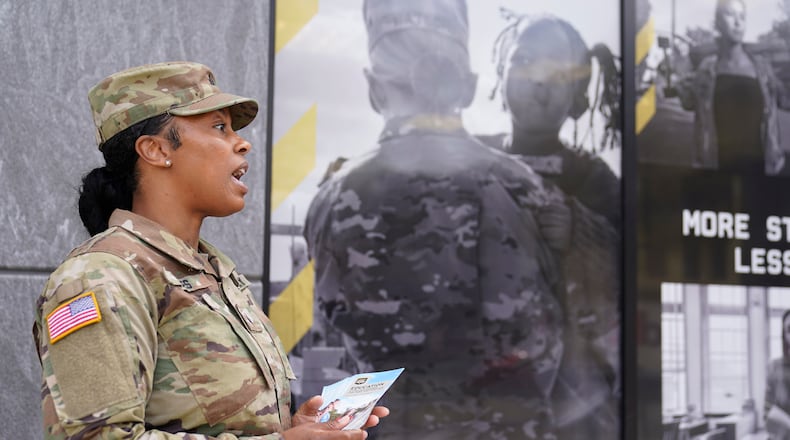“So, the last two years, we saw a 12% drop, which is alarming,” she said. “And that really, I think, for the first time, it gives us some clear insight into the fact that well-being and the whole family’s well-being really does play a role in people’s likelihood of recommending military service to someone that they care about.”
Military recruiters across the country have scrambled this year to meet recruitment numbers. The different branches are writing a wide variety of incentive bonus checks to get young people to sign up. The signing bonuses range from a few thousand based on specialty to $50,000 from the Army for a six-year commitment. The number jumps above $100,000 from the Navy, who is attempting to even pull Navy veterans back into service with college debt payoffs totaling $65,000.
But when you look at the Military Family Support Programming Survey, the takeaway is that many branches are overlooking core values when it comes to living the military life.
“The biggest finding was that there’s a mismatch in the connection between military service and family life,” Razsadin said. “People are feeling that it’s really hard to, you know, support your family and achieve a great state of well-being.”
Part of that well-being is tied to finances.
In 2019, there were 22,000 active-duty service members and 213,000 members of the National Guard or reserves in the SNAP program, otherwise known as food stamps, according to the USDA.
“We found that 18% of our currently serving respondents were experiencing some level of food insecurity,” said Razsadin.
But that assistance is not always guaranteed.
“In some cases (they) are seeking out support through programs like SNAP, but they’re being told they’re ineligible because of the basic allowance for housing and that’s factored in as income,” she said.
She adds respondents said they’re having trouble making ends meet with many families living off of one income due to the fact a spouse may not have a steady career due to routine moves every couple of years or so to follow the military service member’s duty stations.
“We found that 44% of our currently serving respondents were making between $25,000 and $75,000 in their combined household income annually,” said Razsadin.
Razsadin said that while many seek out programs like the Supplemental Nutrition Assistance Program, others report relying on Special Supplemental Nutrition Program for Women, Infants and Children otherwise referred to as WIC.
“Some of the allowances and things like that, that are in place, just have not kept up with the current landscape,” she said. “And the cost of living and all the expenses that we’re all experiencing right now.”
The survey is done every other year and Razsadin said real change is happening to make life better for those who serve and their family members.
“We are seeing real positive change come from this research and the work of our organization as well as others. And so, over the course of the next year and a half, we’ll be taking this research and really dissecting it to like triage our response and make sure that we’re understanding what’s happening,” Razsadin said. “So, we can break our findings down to specific demographic groups, this was specific locations so that we can say, okay, enlisted families in x location are having a harder time with this issue. And that gives us real information to help us figure out how we tackle these challenges because they are complex.”
You can read the full report on the Military Family Advisory Network website at mfan.org/media.
This story originated from WCPO, a content partner of Cox First Media.
About the Author
